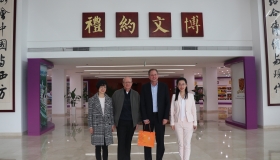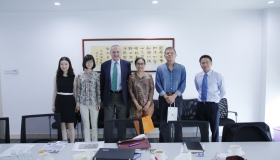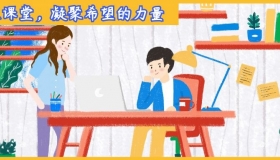Chinese Culture Colloquium: Professor CHEN Pingyuan
“It is a miracle those Chinese universities continued to develop instead of getting ruined in the Second World War II.” said Professor Chen, Chair Professor of Chinese Language and Culture at the Chinese University of Hong Kong. He referred to it when introducing the history of the National Southwest Associated University.
Professor Chen used the word “un-destroyable” to describe the retreating history of Chinese universities during the anti-Japanese war, which broke out in 1937, when Peking University, Tsinghua University and Nankai University merged to form Changsha Temporary University in Changsha, and later National Southwestern Associated University in Kunming, capital of Yunnan province in China's remote and the mountainous Southwest. After the war, the universities moved back and resumed their operation.
These three universities, which were some of the country's most prestigious, modern educational institutions of higher learning and research, decided to retreat to Changsha, the capital city of Hunan province, (about 900 miles away from Beijing) in order to unite together. Although by the middle of December 1937, many students had to leave to fight the Japanese when the city of Nanjing fell to the enemy forces. As the Japanese forces were gaining more territory they eventually bombed Changsha in February 1938. The 800 staff faculty and students left had to flee and made the 1,000 mile journey to Kunming. In these extraordinary wartime circumstances for eight years, staff, professors and students had to survive and operate in makeshift quarters that were constantly being subjected to sporadic bombing campaigns by the Japanese forces. There were dire shortages of food, equipment, books, clothing and other essential needs, but they did manage to conduct the running of a modern university. Over those eight years of war (1937-1945), the Southwest Associated University became famous nationwide for having and producing many, if not most, of China's most prominent academics, scholars, scientists and intellectuals.
In introducing the retreating route of the universities and the stories of the students, teachers and scholars during their retreating, prof. Chen displayed a series of historical phtos and records to elaborate his points. Furthermore he took Professor WU Mi, professor FENG Zikai and professor ZHU Kezhen, three famous scholars of the time, as examples to analyze the inner world of intellectuals in wartime.
“Firstly, (retreating to the west) was a collective decision instead of individual. Secondly, enthusiasm did not diminish during the journey. Thirdly, retreating is not for emergency but for the long run development of education.,” concluded Professor Chen on the features of Chinese universities retreating. He pointed out that the Chinese scholars in the wartime not only had managed to continue academic research but also had an high expectation on future school-running, which is “to cultivate talents for post-war social construction instead of only for wartime construction”.
“Chinese universities nowadays are lack of spirit, though not short of money,” added Prof. Chen in comparison. Finally, in his closing remarks, Prof. Chen wished CUHK (SZ) to carry forward the fine tradition and the academic spirit of the scholars in the past.
 |
 |
 |
 |




